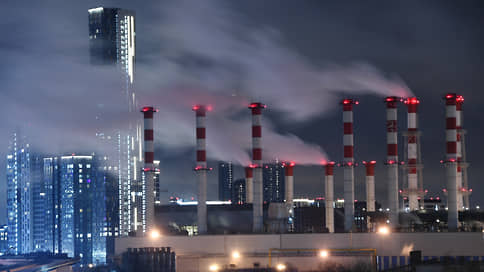20 impressive wildlife images
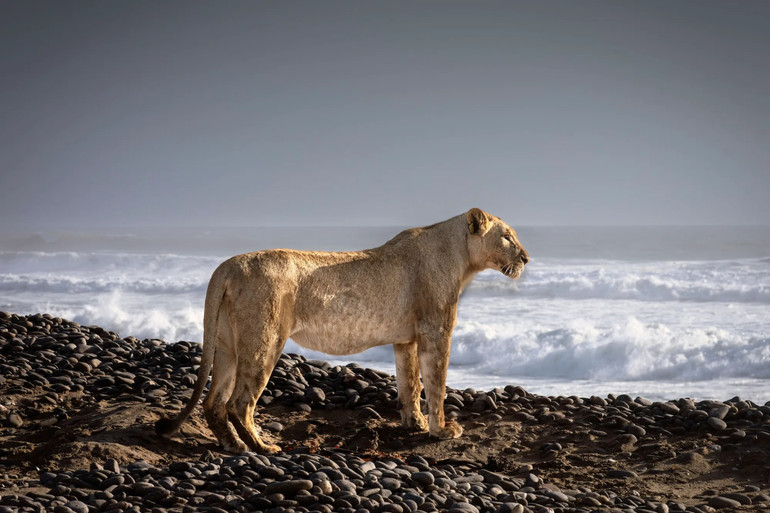
The Remembering Wildlife Rememberting Wildlife has selected the 20 best pictures of animals of different kinds.
They were allocated from 4500 competition works, as well as photos from previous issues, writes Popular Science.
Remembering Wildlife is a series of books created to raise awareness of the threat of wildlife disappearance and raise funds for their protection.
According to the organizers, over 55,000 copies of books were sold throughout the series. More than £ 1.2 million (approximately $ 1.55 million) has been transferred to 79 wildlife protects in 34 countries.
In October 2025, a new anniversary album 10 years of Remembering Wildlife – the first book of the series dedicated to not one species, but to different animals will be released.
« Gamma, the thinkers of the beaches »
“Gamma, the thinkers of the beaches”
Photo: Griet Van Malderen / Remembering Wildlife
« Gamma is a lion, adapted to life in the desert. It belongs to a small group of lions who have learned to survive in this harsh environment, going to the ocean to hunt seals.
In the place where survival is a constant struggle, the gamma embodies the stability and ability to adapt the most mysterious predators of nature « , – This is a description of the picture taken in Namibia.
“Titan’s Battle”
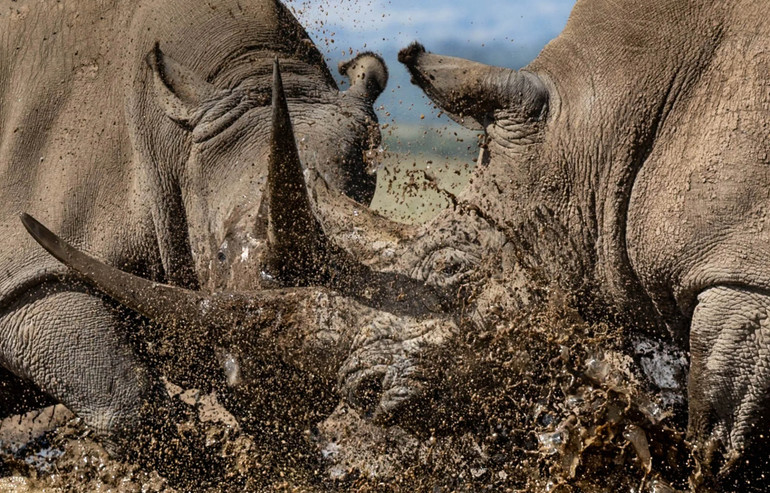
“Titans’ Battle”
Photo: Alessandro Marena / Remembering Wildlife
Remembering Wildlife says that rhinos are under a great threat because of poaching – people kill animals to illegally sell their horns.
« Rememberting Wildlife provided financial support to several rhinos’ protection organizations and environmental protection. – they note there.
The shot is taken in the Solio Reserve in Lympipia (Kenya).
“Moving moment”
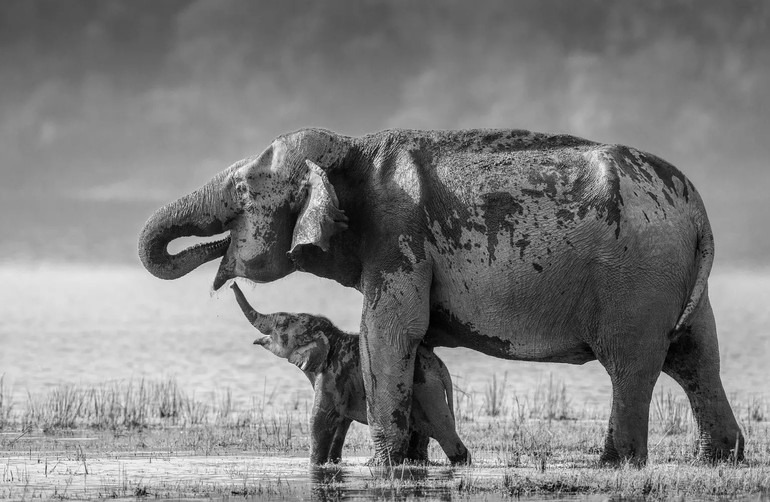
“Moving moment”
Photo: Jagdeep RajPut / Remembering Wildlife
The top 20 pictures of animals include a photo where a small elephant asks water while having his mother in a hot summer noon quenches thirst near the Ramgang River.
Shooting place – Korbett National Park (India).
“The era of innocence”
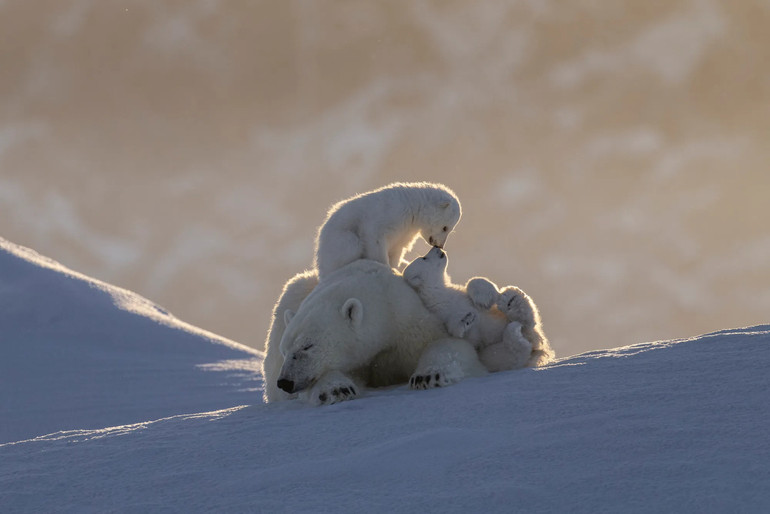
“The era of innocence”
Photo: Julie Oldroyd / Remembering Wildlife
Buffin Island (Canada) is one of the greatest and cleanest places in the world where you can watch white bears, especially in March and April, when sea ice freezes.
However, when the air temperature drops to -40 ° C, it is also one of the most difficult areas for shooting -photographers should constantly make sure that their hands remain warm and can press the button.
« We spent most of the morning and a day with this female and her toddlers, who probably just got out of the den.
We followed them to try to see them again, and when I got an iceberg, I did not believe my eyes: my mother sat with the kids, huddling to each other, on top of the ice. Watching such intimate moments between the bears while their mom is asleep is the impression of a lifetime, « – told the authors a photo taken on Buffin Island.
« In the arms of eternity: a timeless promise of mother »
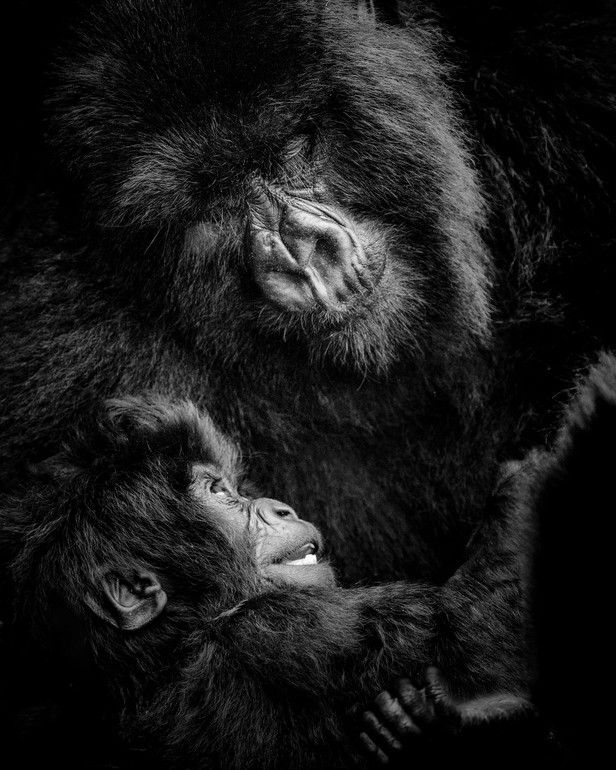
“In the arms of eternity: a timeless promise of the mother”
Photo: Kim Paffen / Rememberting Wildlife
« The mothers of mountain gorry gently holds her baby in her hands. It is a portrait of tenderness, engraved in the game of light and shadow. Its quiet inner light protects not only the baby, but also the fragile future of the species, which is revived from the limit of disappearance.
Here, where Diaan Fossy’s heritage (American ethology, gave and popularizer of the environment – ed.) So far whispers through the thickets– the authors of the photographic project.
Shooting place – Volcanic National Park in Rwanda.
“Reflection of the tiger”
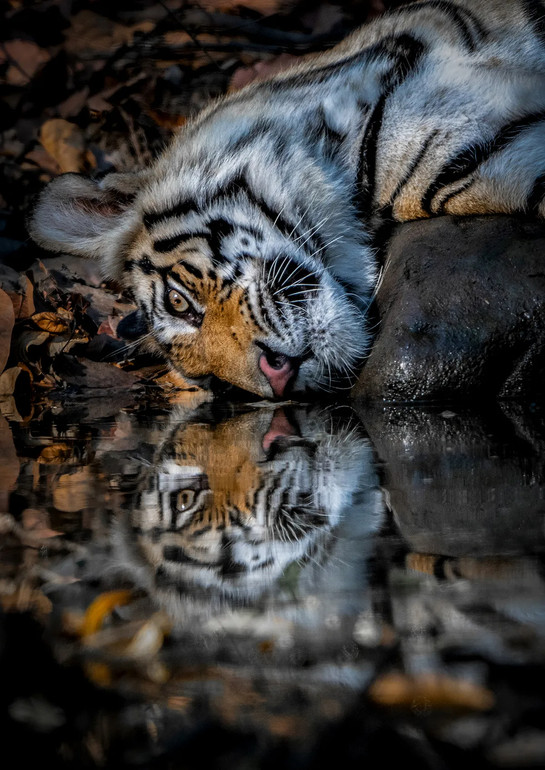
“Tiger reflection”
Photo: Bircan Harper / Remembering Wildlife
The weight of the tiger can reach 260 kilograms, and length – up to 3 meters. It is the largest among large cats.
« Tigers live in Asia – from India where two -thirds of the entire wild population lives to the Far East of Russia and China », – Note in Popular Science.
Shooting place – Bandhavgar (India) National Park.
« MBILI BORA in the Rain »
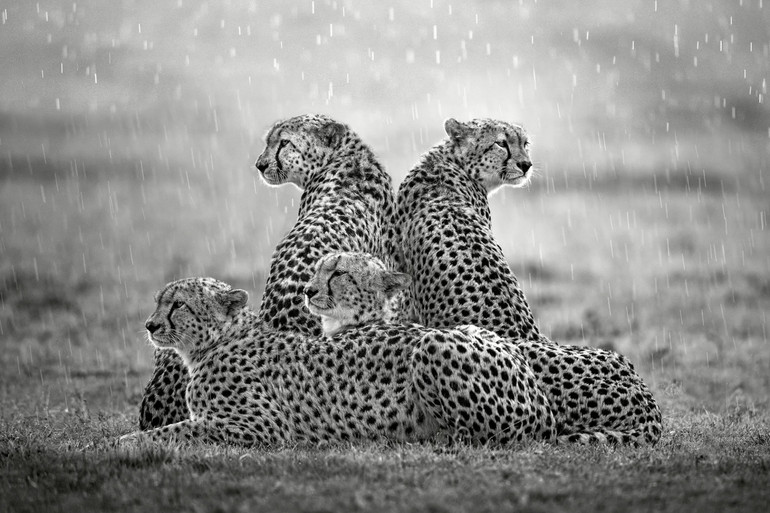
“Mbili bora in the rain”
Photo: Xavier Ortega / Remembering Wildlife
Mbili Bora is called a coalition of five cheetahs that « rule » in the Masai Marra National Reserve in Kenya.
Mbili Bora is a phrase of Sukhili, which translates as « two of the best » (from « Mbili » – two, and « bora » is the best). In the context of cheetah coalition, it can be a metaphorical designation of two individuals that make up a special couple or group leaders.
« Welcome, unintered with a guest »
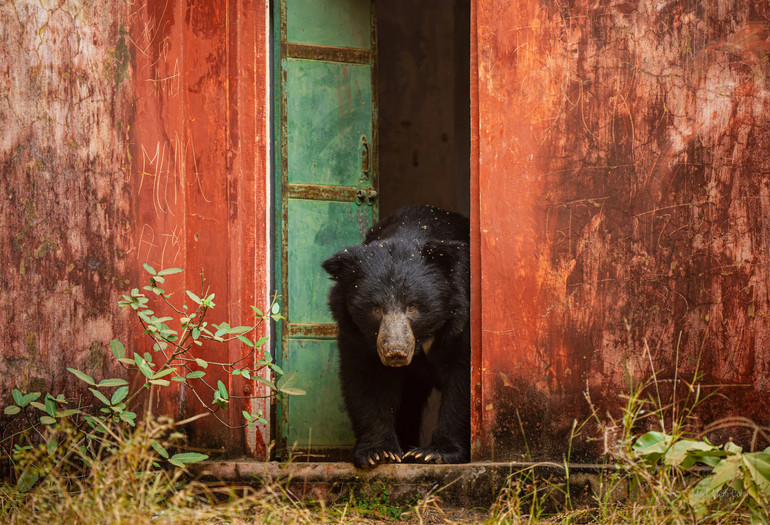
“Welcome, unintered to the guest”
Photo: Mark Meth-Cohn / Remembering Wildlife
In the picture taken in the Indian reserve of Tigers « Rantambor », the bear-Hoach derives from the abandoned house.
« Thirst »
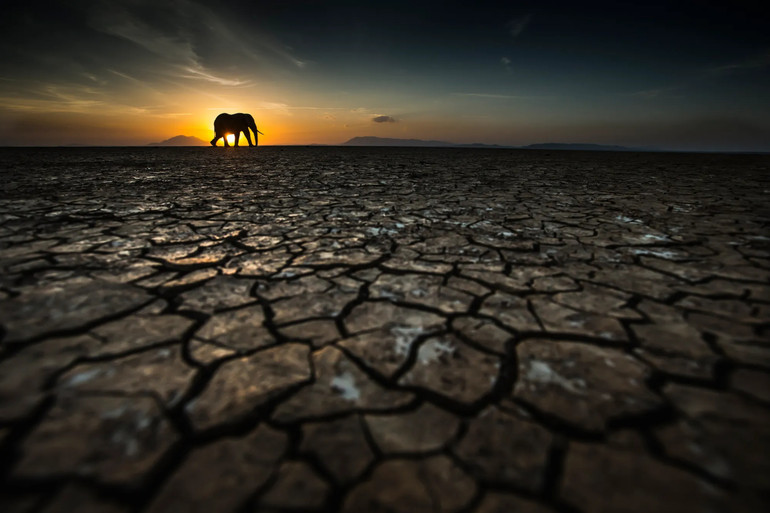
« Thirst »
Photo: Tom Way / Remembering Wildlife
Rememberting Wildlife financially supports several elephant protection projects in Kenya. One of them involves the installation of « bee fences » to deter animals.
Because elephants do not like bees, landowners and poaching fighters use them to environmental regulation of their movement.
“Enjoying sunrise”

“Enjoying the sunrise”
Photo: Mark Meth-Cohn / Remembering Wildlife
« It is often cited that there are more tigers in captivity in the United States than they are all over the world – a vivid reminder of what the future of tigers may be if the environmentalists do not continue their struggle.
Tigers are an indicator of ecosystem health. For every tiger that lives in the forest, you can trace the prosperity of plants, trees, insects, birds and other mammals « , Said Margo Raggett, founder and producer Remembering Wildlife.
“Dog love”
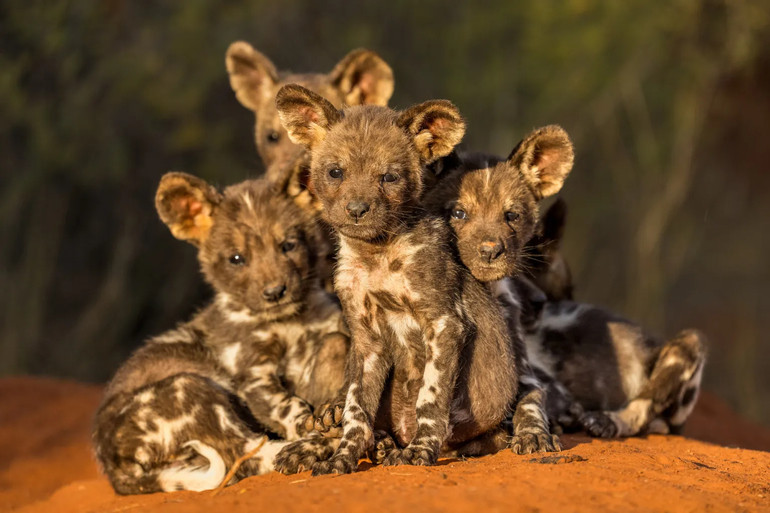
“Dog love”
Photo: Marcus Westberg / Remembering Wildlife
« Projects supported by Remembering Wildlife include vaccination of domestic dogs to prevent rabies spread among African wild dogs as well as the use – tell the authors of the project.
With the assistance of the project, zoo defenders transported 14 African wild dogs (disappearing in Malawa species) from South Africa and Mozambique to the Livonda National Park and the Wildlife Reserve of Maggete.
The puppies depicted in the photo were born after such transportation.
The shooting place is the natural reserve of Tsvala Kalahari (South Africa).
“Fire of creation”

“Fire of creation”
Photo: James Giford / Remembering Wildlife
Photo by James Gifford says that a large part of the rhino population in Botswana was destroyed during the Covid-19 pandemic when tourists did not come there.
« Instead of focusing on the negative aspects of the poaching of rhinos, I wanted to create an image that conveys a sense of hope – almost a new beginning, as if it were the first rhinos that were mounted on the fire of creation.
I waited for a long time near the watering hop, hoping that these rhinos would come to drink. Took a position on the route to shoot against the sun. The effect of reverse lighting and dust that created a blurry shadow added ephemeral effect « , He explained.
“Attached”
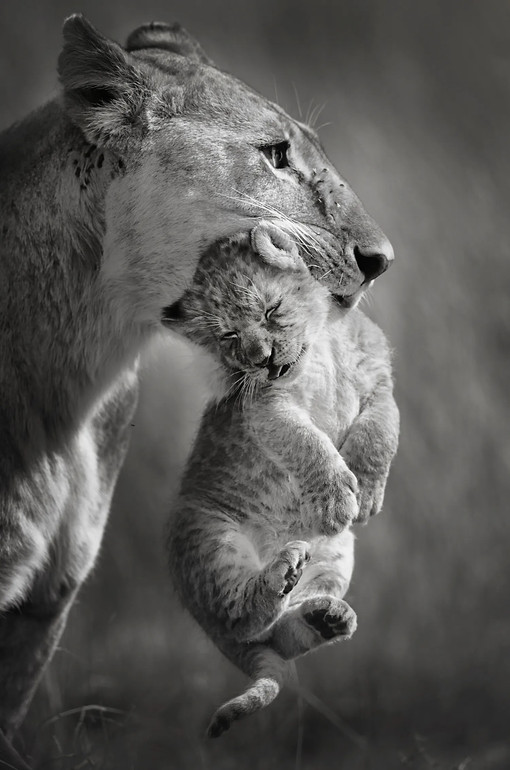
“Attached”
Photo: Vicki Jauron / Remembering Wildlife
The lioness at dawn carries one of his two kids to a new hiding place.
The photo was taken in 2021 at Masai Marra National Park, located in the southwest of Kenya.
« Expedition »
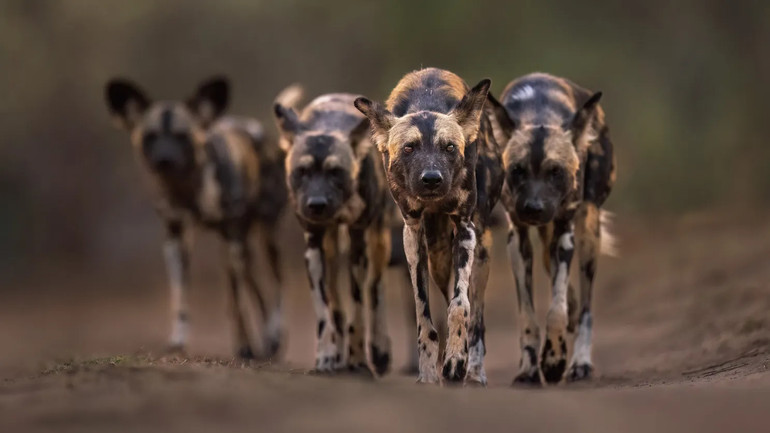
« Expedition »
Photo: Torie Hilley / Remembering Wildlife
« One very early morning we saw painted dogs on the road, and it seemed that they just woke up. We stopped, got out of the car and started taking pictures of them. They didn’t disappoint.
We gave them space, but they decided to approach us, and then passed by very calmly and everyday. It was an incredible moment when it was possible to take off how a flock was going right to me. The moment I will never forget, « Said Torri Hili’s wildlife photographer.
Shooting place – Mana Puls National Park (Zimbabwe).
« The majestic union! »
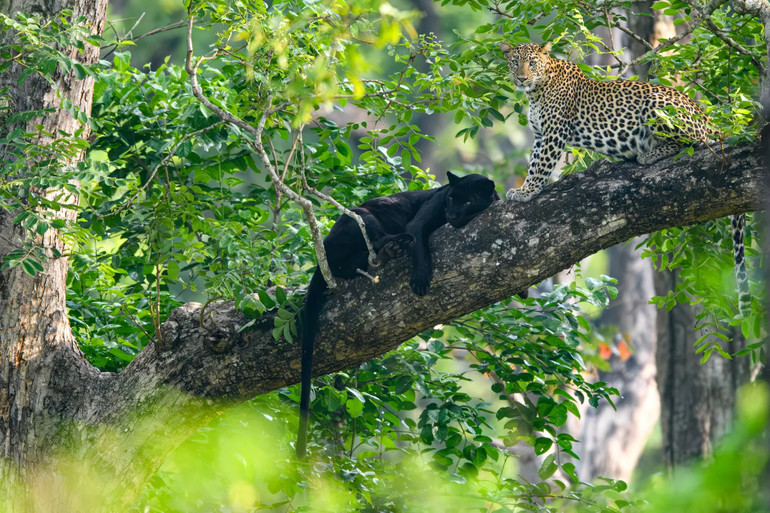
“The majestic union!”
Photo: Kaustubh Mulay / Remembering Wildlife
« Three years of expectations were successful, because I managed to take an exclusive photo of this elusive dark -colored leopard and his ladies »– said Kaustubh Mulay Indian wildlife photographer.
His shot of leopards in Tiger Nagargol, Karnatak, India, was included in the book anniversary 10 Years of Remembering Wildlife.
“Five under the blue hour”
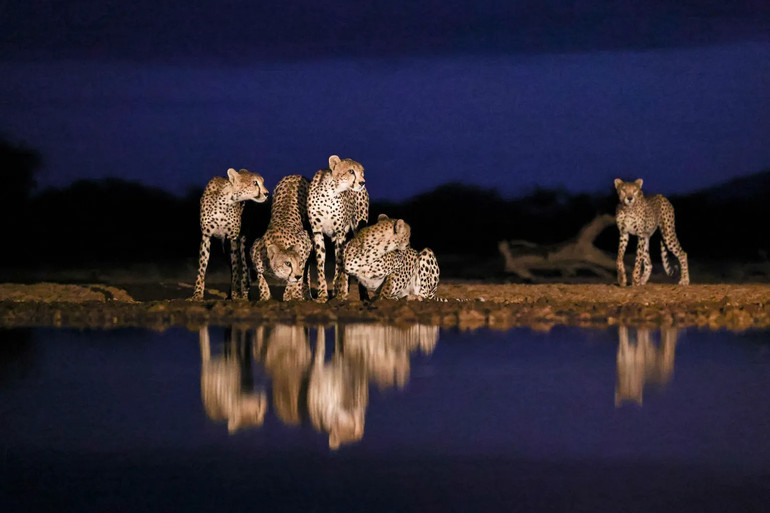
“Five under the blue hour”
Photo: Johann Du Toit / Remembering Wildlife
The photo shows five cheetahs during the blue hour (Blue Hour) – so called the short period before the sunrise or after the sunset, when the sky becomes saturated blue, and natural light has particularly soft, cold shades.
The picture is made of specially equipped shelter for observation and photographing of wildlife Shompole Hide in the region of ramrod, Kenya.
« African Chernobyl Pangolin »
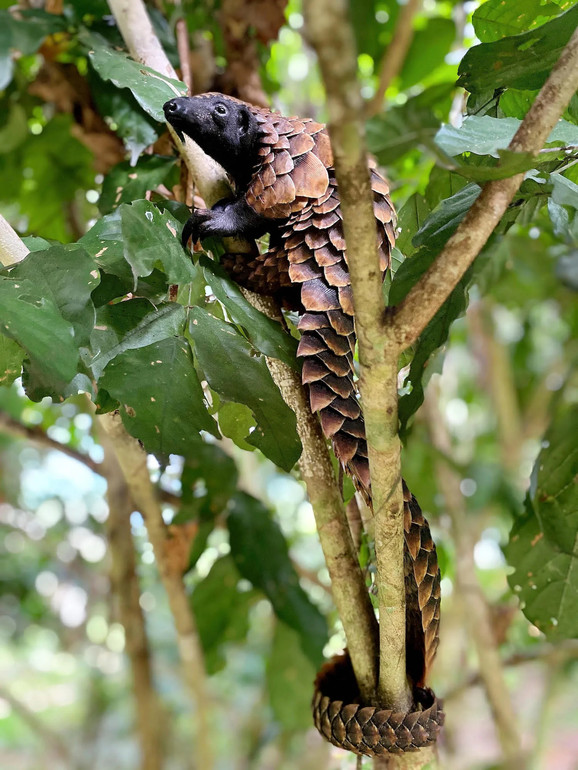
« African Chernobyl Pangolin »
Photo: ALESSANDRA SIKAND / REMEMBERING Wildlife
The photo shows pangolin. It is a unique mammal, known for his body covered with solid keratin scales (the same material as human nails). Due to a specialized diet, which includes mainly anthrax and termites, they are sometimes called « scaly ants ».
Shooting place: Zang-Sanga National Park in the Central African Republic.
« Leopard enjoys the morning sun »
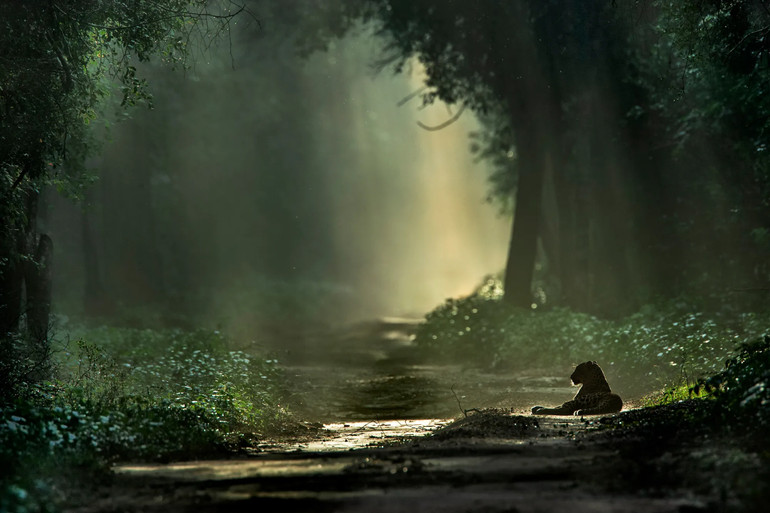
“Leopard enjoys the morning sun”
Photo: Ifham Raji / Remembering Wildlife
« After three days of heavy rains, this leopard took advantage of the opportunity to fall under the first rays of the morning sun », -said the photo photographer of wildlife and cinematographer from Sri Lanka IFHAM Raji.
The photo is made in Vilpatt National Park (Sri Lanka).
“Scaled dusk”
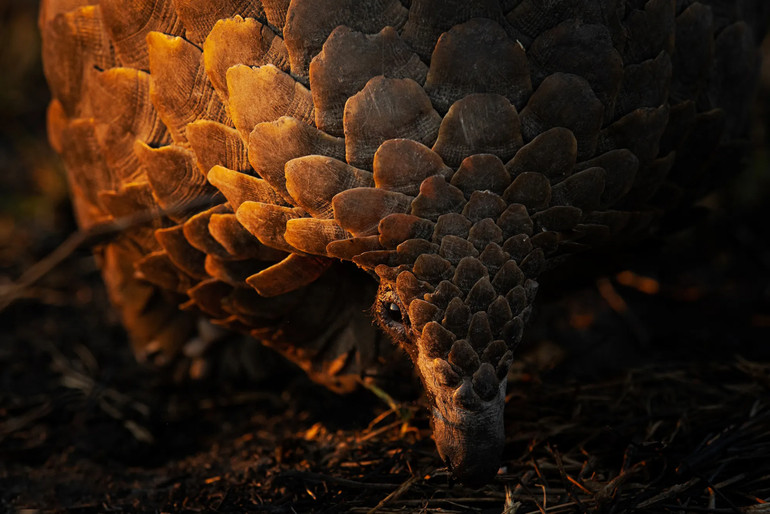
“Scaled dusk”
Photo: Armand Grobler / Remembering Wildlife
« The bright colors of the winter sunset emphasize the tender glow of life of an animal that most on our planet suffers from illegal trade », Said the South African wildlife photographer Armand Grobler.
The photo shows pangolin – an animal that is a victim of mass illegal catch due to the demand for its scales and meat.
Shooting place is a natural reserve of manielet in South Africa.






